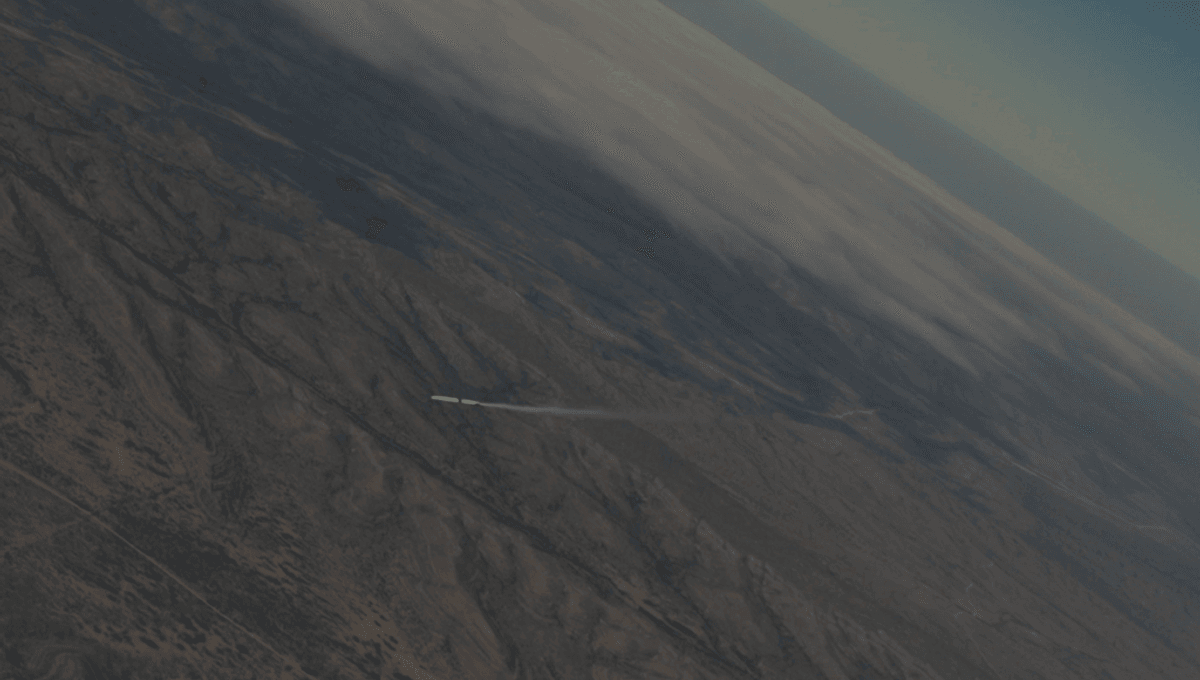
An experimental drone has blasted off on its near-supersonic speed test flight, zipping through the sky at speeds of Mach 0.9 – that’s 1,111 kilometers (690 miles) per hour.
This is just the beginning of things, though. Venus Aerospace, the company that developed the drone, ultimately wants to achieve speeds of Mach 9, nine times the speed of sound.
On February 24, the 2.4-meter (8-foot) long missile-shaped drone was lifted to an altitude of 3,657 meters (12,000 feet) onboard an aircraft. Upon release, the drone fired up its hydrogen peroxide monopropellant engine at 80 percent thrust so as not to exceed Mach 1, then traveled for 16 kilometers (10 miles).
“Using an air-launched platform and a rocket-with-wing configuration allows us to cheaply and quickly get to the minimum viable test of our RDRE as a hypersonic engine. The team executed with professionalism and has a wealth of data to anchor and tweak for the next flight,” Andrew Duggleby, the CTO & Co-Founder of Venus Aerospace, said in a statement.
Based in Houston, Texas, Venus Aerospace is a startup aerospace company that hopes to pave the way toward hypersonic flight (speeds of Mach 5 and above).
The latest test flight was one small part of testing for their Rotating Detonation Rocket Engine (RDRE), which is being developed in partnership with DARPA (Defense Advanced Research Projects Agency), the US State Department’s research agency that’s behind all kinds of weird and wonderful technologies.
“Up next is RDRE flight, and ultimately hypersonic flight, proving that the RDRE is the engine that unlocks the hypersonic economy,” explained Sarah “Sassie” Duggleby, CEO & Co-Founder of the company.
As mentioned, their end goal is to make a vehicle that can cruise at Mach 9 speed, around 11,000 kilometers (6,835 miles) per hour.
This is an unbelievably fast speed. To date, the speediest airplane ever flown by a human is the NASA/USAF X-15. In 1967, pilot Pete Knight used this jet to reach an eye-watering speed of Mach 6.7, around 7,274 kilometers (4,520 miles) per hour.
Concorde, the ill-fated supersonic commercial plane that flew paid passengers until 2003, traveled at a comparatively sluggish Mach 2, around 2,179 kilometres (1,354 miles) per hour.
Crazier still, Venus Aerospace wants to put passengers on these Mach 9 flights. There’s still a huge amount of work before this pipe dream becomes reality, but Venus Aerospace believes it’s making solid progress.
“This is how you do hard things: one bite at a time,” said Sarah Duggleby.
Source Link: Drone Zips Through Skies At Near-Supersonic Mach 0.9 Speeds